
There are many iconic photographers that are classics to share with your students. However, there are many other photographers from both past and present who can inspire your students in big ways! Bring photographers with unique processes to your students to deepen their understanding and highlight the endless possibilities of photography. Because many photographers use innovative techniques and unconventional materials, they are benefical to share with even your non-photography students too!
Spark curiosity and experimentation in any art class with the six photographers and their captivating processes below.
Note: Be sure to review all resources and preview all artists before determining if they are appropriate to share with your students.
1. Hannah Höch: The Collage Pioneer
Hannah Höch is most often associated with the early 20th-century Dada movement. However, her techniques resonate in contemporary art. Höch’s work often involved cutting and pasting images from magazines and newspapers to create thought-provoking compositions that critiqued societal norms. Her innovative use of collage influenced many modern photographers who experimented with layering and mixed media.
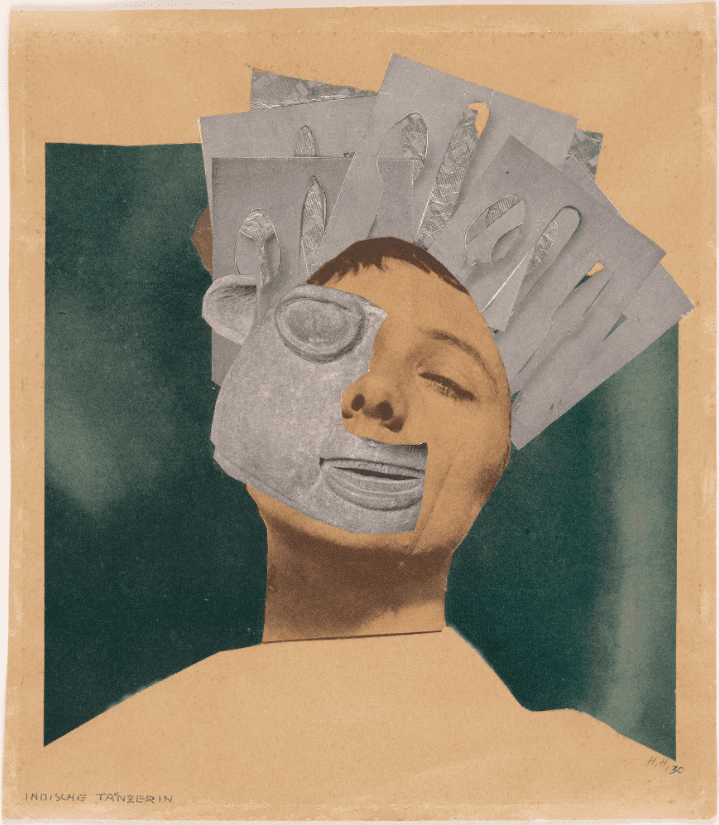
Classroom Activity:
The Photomontage Collage Portraits Lesson in FLEX Curriculum introduces students to mixed media artwork as they reflect on their community traditions. Students create their own collages using printed photographs and magazine cutouts. Encourage them to develop a message that reflects current societal issues or personal narratives.
Guiding Questions:
- What message do you want to convey in your collage?
- How do the photographs and images relate to each other?
- In what ways can you challenge societal norms through your artwork?
2. Erin O’Keefe: The Innovator of Constructed Photography
Erin O’Keefe has an innovative approach to constructed photography, combining physical objects and digital photography to create visually striking images. Her work often blurs the lines between sculpture and photography. O’Keefe creates colorful, geometric compositions using everyday materials, such as paper and fabric. She arranges them in a way that challenges perceptions of depth and space. She then photographs these arrangements, manipulating lighting and angles to enhance their visual impact.

Classroom Activity:
Students design three-dimensional compositions using various materials to create their own constructed photographs. Encourage them to focus on the elements of composition and color. Discuss how their final photographs can change the viewer’s perception of the objects.
Guiding Questions:
- How do the shapes and colors affect the overall composition?
- What emotions or ideas do you want your arrangement to express?
- How does the lighting change the perception of your constructed photograph?
3. Vivian Maier: The Art of the Candid Moment
Vivian Maier was a street photographer who gained fame for her remarkable candid photographs of urban life in the mid-20th century. With no formal training, her unique perspective captured the beauty and complexity of everyday moments. Maier used a medium-format camera, allowing her to compose images thoughtfully while remaining unobtrusive. Her approach emphasizes the importance of being present in the moment and capturing the spontaneity of life as it unfolds.
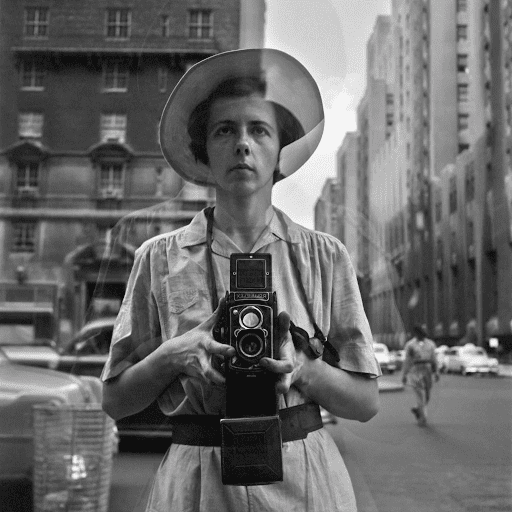
Classroom Activity:
Explore street photography by capturing candid moments in the classroom or community. Discuss the balance between being aware of their surroundings and remaining invisible to their subjects to create genuine photographs.
Guiding Questions:
- How can you remain unobtrusive while capturing candid moments?
- What stories can you find in the everyday activities around you?
- How do the expressions and gestures of your subjects tell a story?
4. Lorna Simpson: The Intersection of Photography and Narrative
Lorna Simpson is an influential artist who combines photography with text to explore themes of identity, race, and gender. Her work often features fragmented narratives that challenge viewers to engage with the images on multiple levels. Simpson’s photographs typically include accompanying text which creates a dialogue between the visual and written word. This process encourages viewers to consider how narrative shapes our understanding of images.
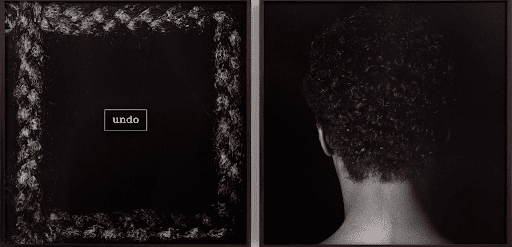
Classroom Activity:
Encourage students to create their own narratives that pair images with text. Examine themes or social issues relevant to their lives and brainstorm subject matter and words to enhance their message. Play with different combinations and arrangements of visuals and text.
Guiding Questions:
- What resonating themes do you want to explore in your narrative?
- How does the text enhance or alter the meaning of your images?
- What emotions do you want to evoke for the viewer?
5. Cindy Sherman: The Art of Transformation
Cindy Sherman is an acclaimed American photographer known for her conceptual self-portraits that explore identity and critique social expectations. Sherman uses costumes, makeup, and props to transform into various personas. Each photograph tells a story that invites viewers to question the notion of self.
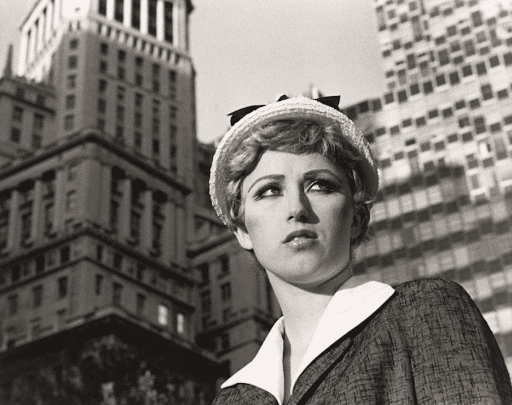
Classroom Activity:
The Current Events Digital Portrait Lesson in FLEX Curriculum guides students through the creation of digital self-portraits to communicate an emotion around a current event. It includes an artist bio of Cindy Sherman with quick facts, a brief history and bio, and a list of famous works.
Guiding Questions:
- What emotions do different symbols communicate?
- How do costume and makeup change your appearance and persona?
- What recent current events have affected your life?
6. Andreas Gursky: The Digital Aesthetic
Andreas Gursky is a German photographer celebrated for his large-scale images. They often incorporate digital manipulation to create stunning representations of modern life. His work reflects themes of globalization and consumerism. Gursky combines multiple photographs and digital techniques to produce detailed landscapes and scenes that emphasize scale and perspective. His compositions encourage viewers to contemplate their surroundings.
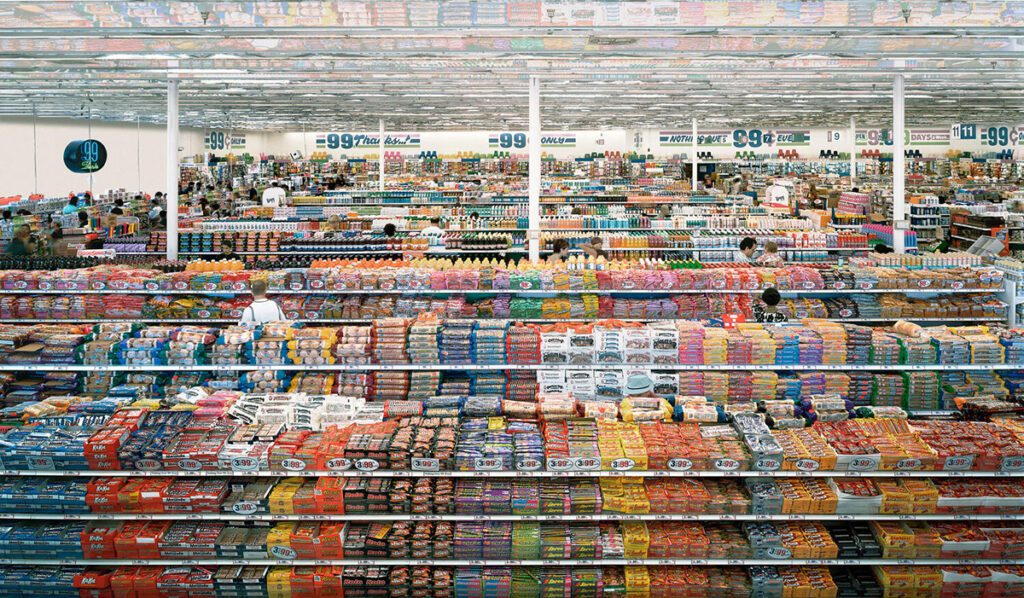
Classroom Activity:
Students will photograph a familiar scene and then digitally manipulate it to emphasize specific elements, such as scale or color. Discuss how their changes affect the overall narrative and the viewer’s perception. Download the artist bio of Gursky from FLEX Curriculum to supplement your classroom activity!
Guiding Questions:
- How does changing the scale of your photograph impact the viewer’s experience?
- What elements of your scene do you want to highlight through manipulation?
- How does digital editing affect the message of your photograph?
Exploring unique photography processes enriches all students’ artmaking and makes them more well-rounded. Not only does it introduce students to key photographers, but it allows them to see the possibilities beyond snapping and developing a traditional photo. Introduce Lorna Simpson to showcase the power of text, Cindy Sherman to demonstrate the depth of self-portraits, and Vivian Maier to harness candid spontaneity. Take photography beyond simple image-making and transform it into a tool for storytelling and developing concepts around identity and social issues.
Who is your favorite photographer to share in the classroom?
How can sharing new processes and mediums with your students push their creativity?
To continue the conversation, join us in The Art of Ed Community!
Magazine articles and podcasts are opinions of professional education contributors and do not necessarily represent the position of the Art of Education University (AOEU) or its academic offerings. Contributors use terms in the way they are most often talked about in the scope of their educational experiences.






